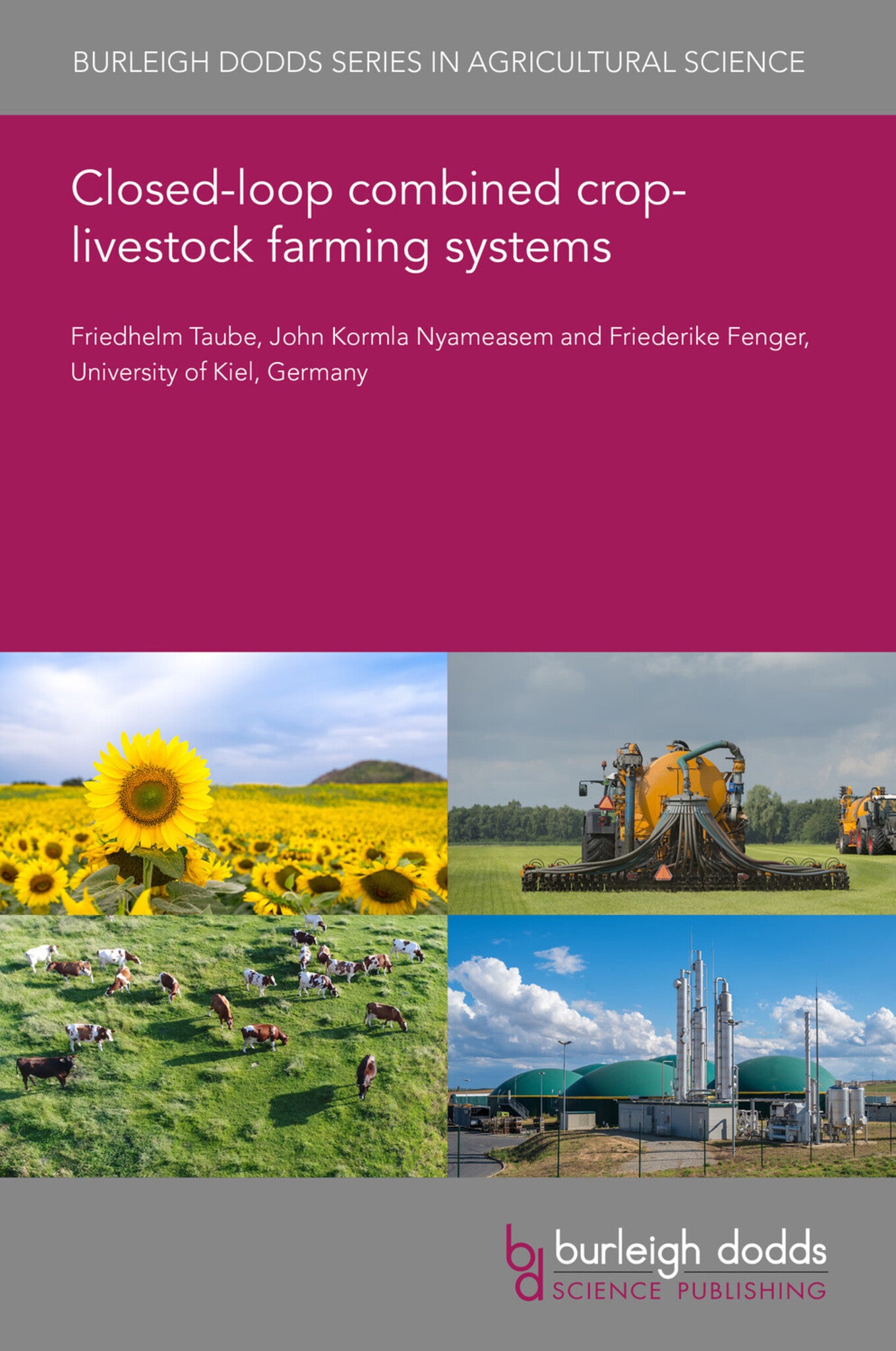We're sorry. An error has occurred
Please cancel or retry.
Closed-loop combined crop-livestock farming systems

Some error occured while loading the Quick View. Please close the Quick View and try reloading the page.
Couldn't load pickup availability
- Format:
-
08 January 2024

The global demand for animal-sourced foods has led to an expansion and intensification of livestock production, resulting in complex environmental and ecological challenges. In the 1960s and 1970s, leys played a crucial role in cropping systems. However, the pursuit of increased production to meet the needs of a growing global population has driven specialization in agriculture. This shift has involved widespread use of inputs like fertilizers and herbicides, narrowing agricultural focus in high-income regions. Consequently, it has reduced agro-diversity and fragmented once-diverse landscapes, leading to biodiversity loss, diminished pollinator habitats, and increased susceptibility to pests and diseases, all threatening global food security. Despite advancements in breeding for crops like maize, translating these gains into practical agriculture has been limited. This has resulted in too few crops cultivated under high-intensity conditions, leaving current food systems ill-prepared for climate change. A paradigm shift towards resilient food systems, prioritizing increased yields and ecological efficiency, is essential to align with the EU’s farm-to-fork strategy. This chapter explores agricultural challenges and underscores the need for sustainable solutions. It delves into the integration of crop and livestock systems, an innovative approach that optimizes food production while reducing reliance on synthetic inputs. This approach not only improves the conversion of plant-bound nutrients into animal-source food but also nurtures soil vitality. The discussion extends to grasslands and multispecies leys, highlighting their role in promoting biodiversity, enhancing soil health, and offering carbon sequestration opportunities. A compelling case study illustrates the benefits of a grass-clover ley-based integrated crop-livestock system (ICLS), impacting water and air quality conservation, climate change mitigation, agro-biodiversity enhancement, and land use efficiency. Despite evidence that innovative farming practices can enhance environmental benefits, farmers often receive inadequate compensation due to the lack of proper valuation. Additionally, the chapter provides estimates of avoided environmental costs associated with a typical ICLS compared to a conventional dairy system. In conclusion, a transformative shift in agricultural practices, which prioritizes sustainability, regional circularity, and the preservation of natural and social capital, is advocated.

TECHNOLOGY & ENGINEERING / Agriculture / Sustainable Agriculture, Sustainable agriculture, TECHNOLOGY & ENGINEERING / Agriculture / Agronomy / Crop Science, TECHNOLOGY & ENGINEERING / Agriculture / Organic, TECHNOLOGY & ENGINEERING / Environmental / General, TECHNOLOGY & ENGINEERING / Agriculture / Animal Husbandry, Biofuels, Agricultural science, Agronomy and crop production, Animal husbandry

- 1 Introduction
- 2 Solutions to improve the environmental impact of livestock farming
- 3 Ecological intensification: a critical concept for future farming systems
- 4 The potential of mixed cropping and integrated croplivestock systems
- 5 The role of grasslands in cropping and livestock systems: the case of grass-legume leys
- 6 Case study: comparing specialized and integrated systems to improve the eco-efficiency of dairy farming in Germany
- 7 Conclusion and future trends
- 8 Where to look for further information
- 9 References



